Abstract
OBJECTIVES: To describe relative hazards in sectors of the beryllium industry, risk factors of beryllium disease and sensitisation related to work process were sought in a beryllium manufacturing plant producing pure metal, oxide, alloys, and ceramics. METHODS: All 646 active employees were interviewed; beryllium sensitisation was ascertained with the beryllium lymphocyte proliferation blood test on 627 employees; clinical evaluation and bronchoscopy were offered to people with abnormal test results; and industrial hygiene measurements related to work processes taken in 1984-93 were reviewed. RESULTS: 59 employees (9.4%) had abnormal blood tests, 47 of whom underwent bronchoscopy. 24 new cases of beryllium disease were identified, resulting in a beryllium disease prevalence of 4.6%, including five known cases (29/632). Employees who had worked in ceramics had the highest prevalence of beryllium disease (9.0%). Employees in the pebble plant (producing beryllium metal) who had been employed after 1983 also had increased risk, with a prevalence of beryllium disease of 6.4%, compared with 1.3% of other workers hired in the same period, and a prevalence of abnormal blood tests of 19.2%. Logistic regression modelling confirmed these two risk factors for beryllium disease related to work processes and the dependence on time of the risk at the pebble plant. The pebble plant was not associated with the highest gravimetric industrial hygiene measurements available since 1984. CONCLUSION: Further characterisation of exposures in beryllium metal production may be important to understanding how beryllium exposures confer high contemporary risk of beryllium disease.
Full text
PDF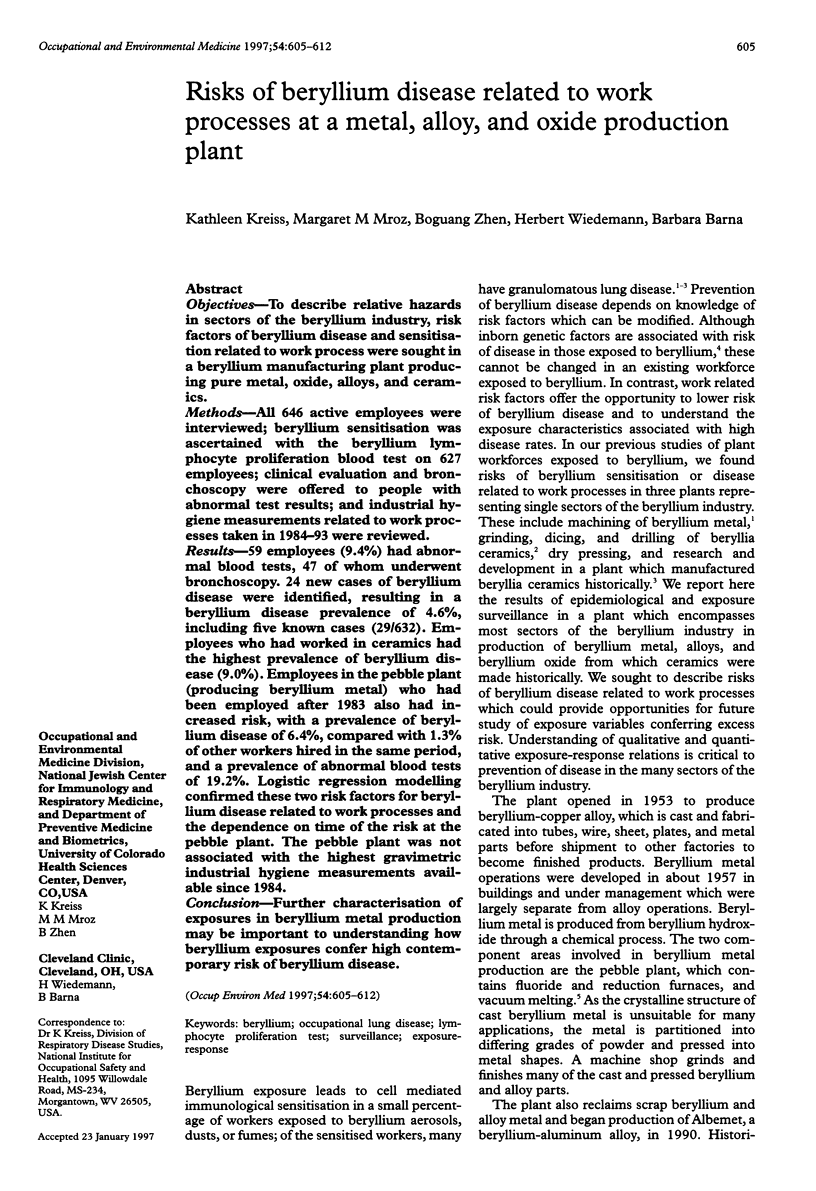
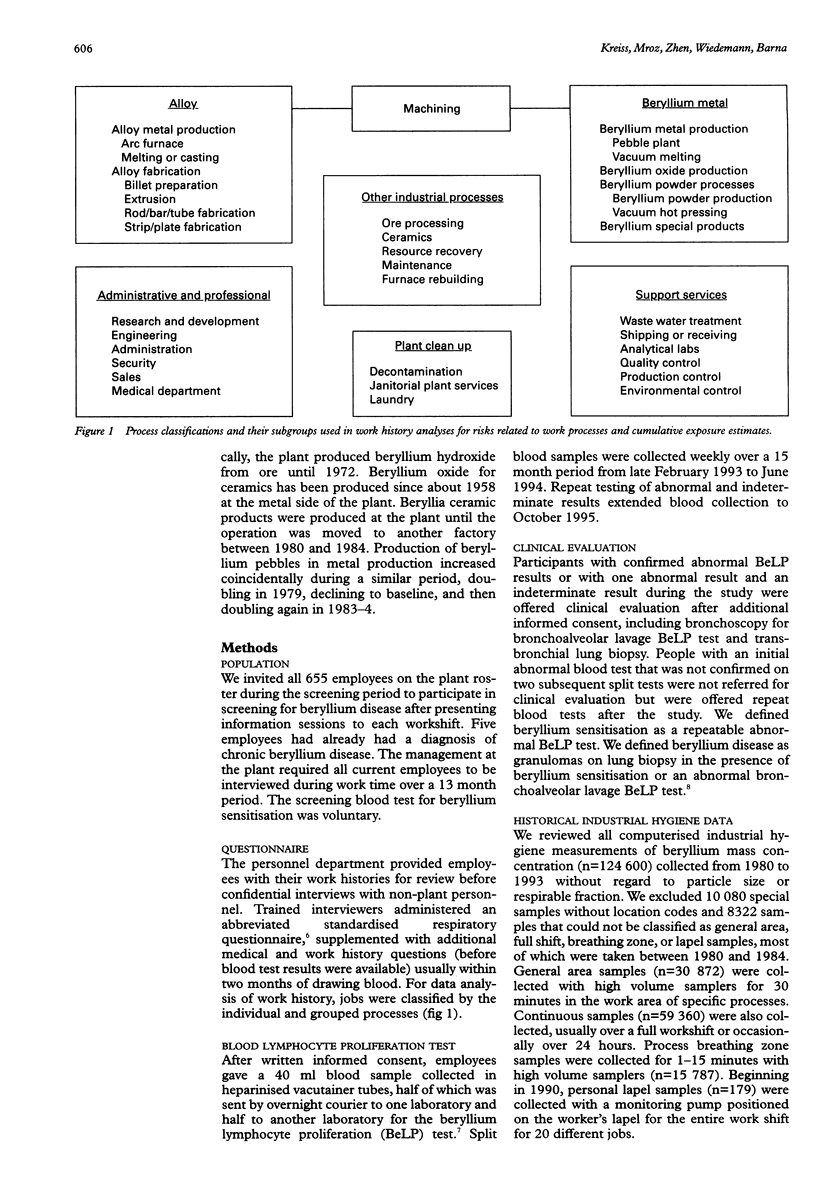
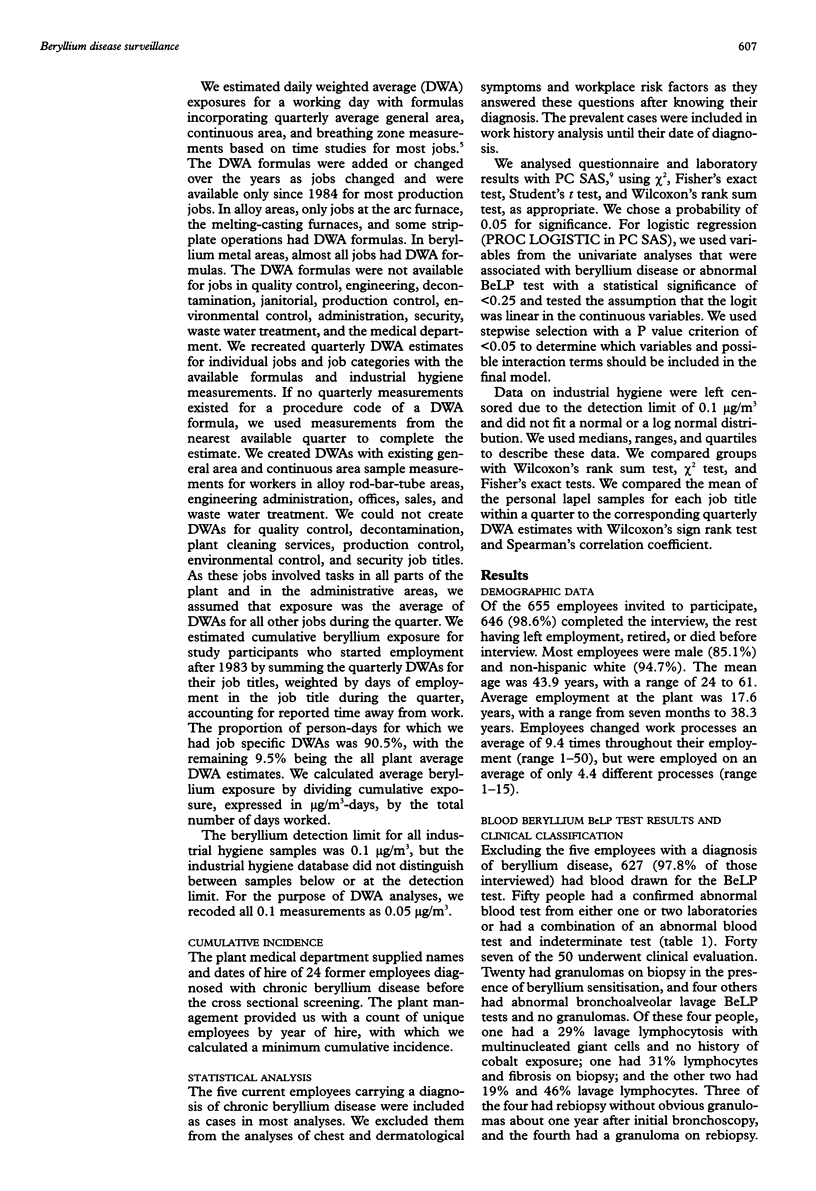
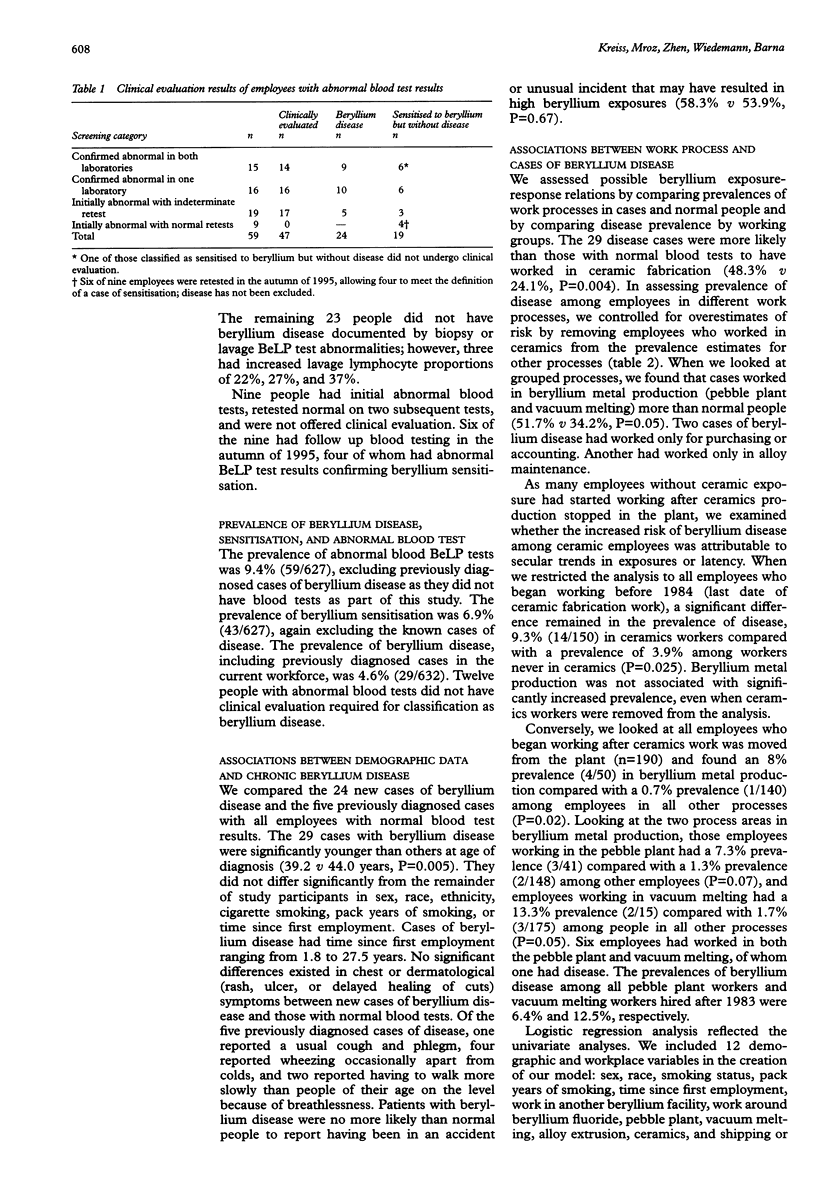
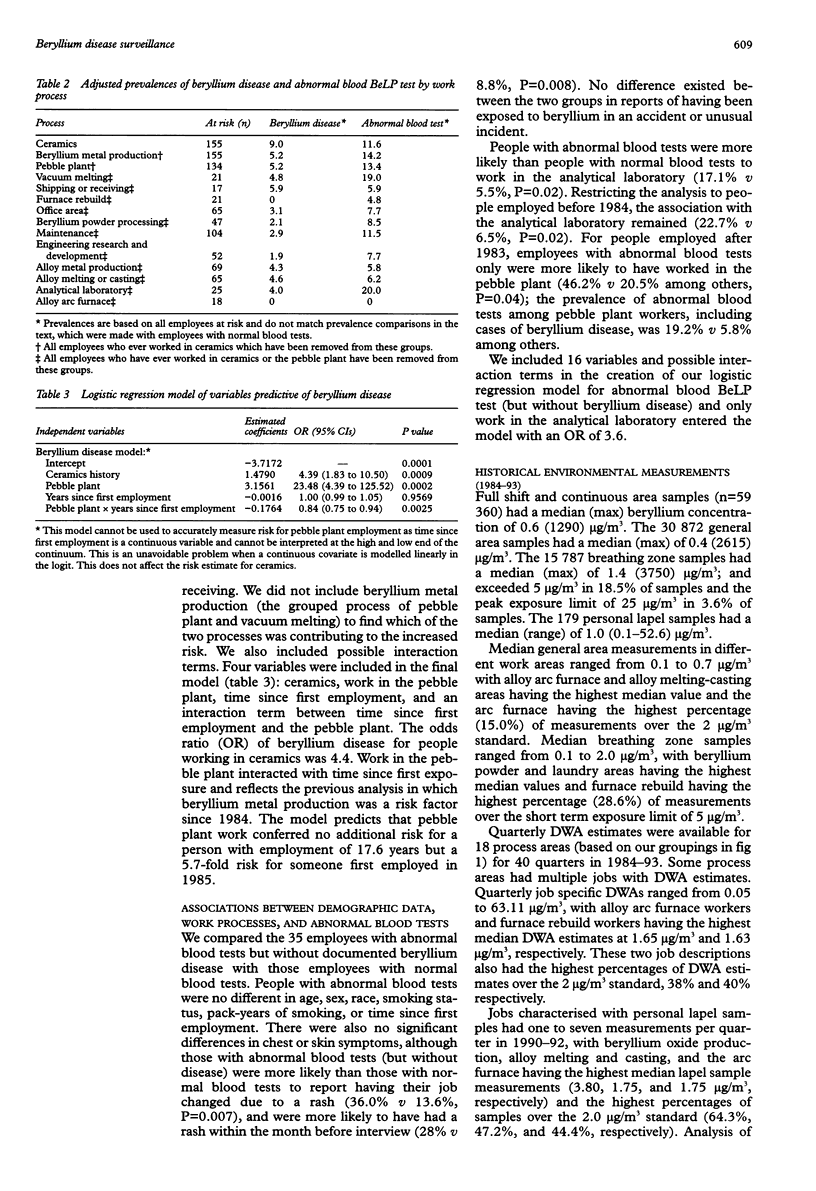
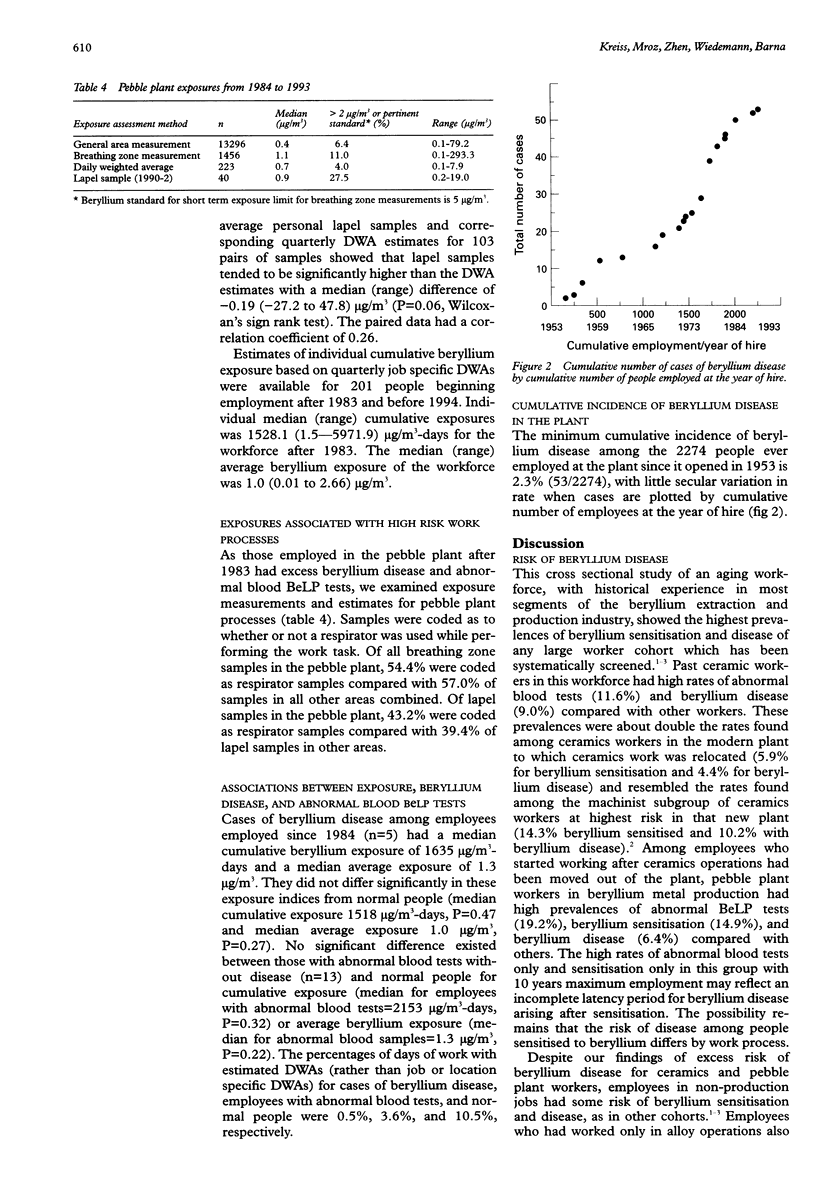
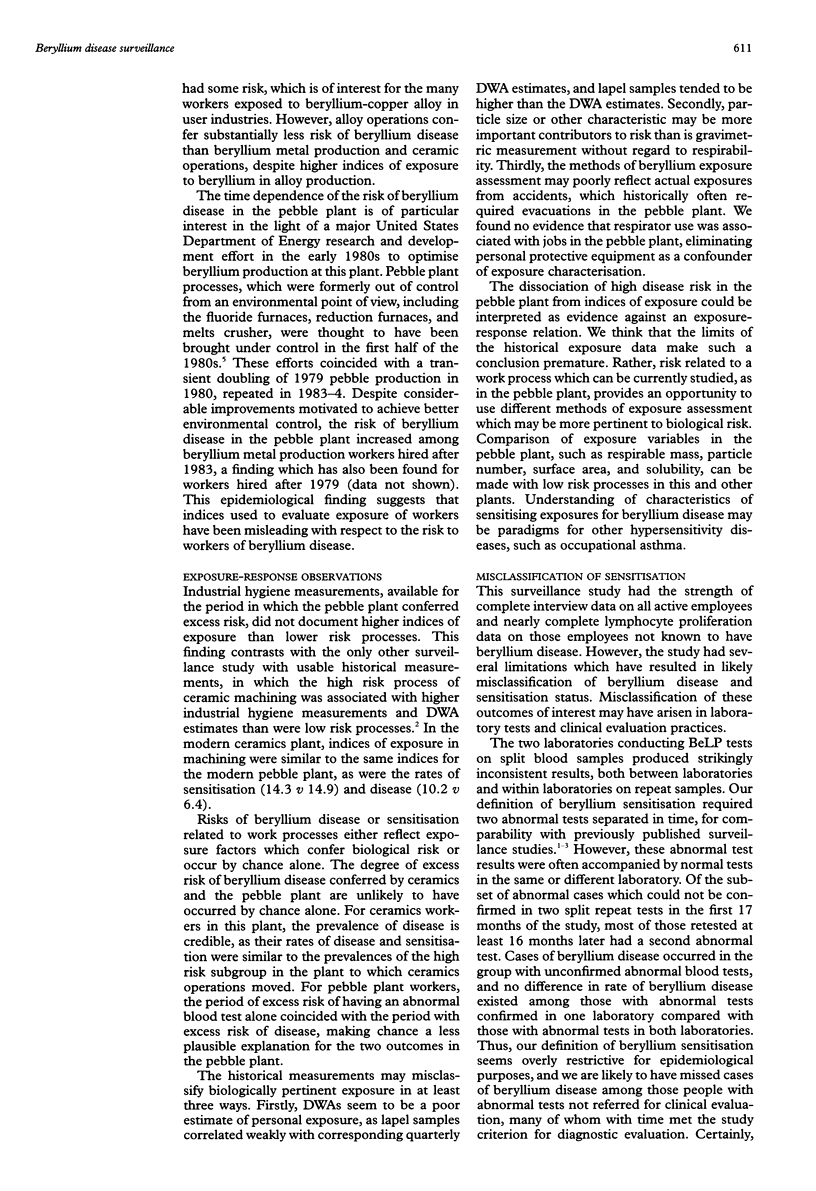
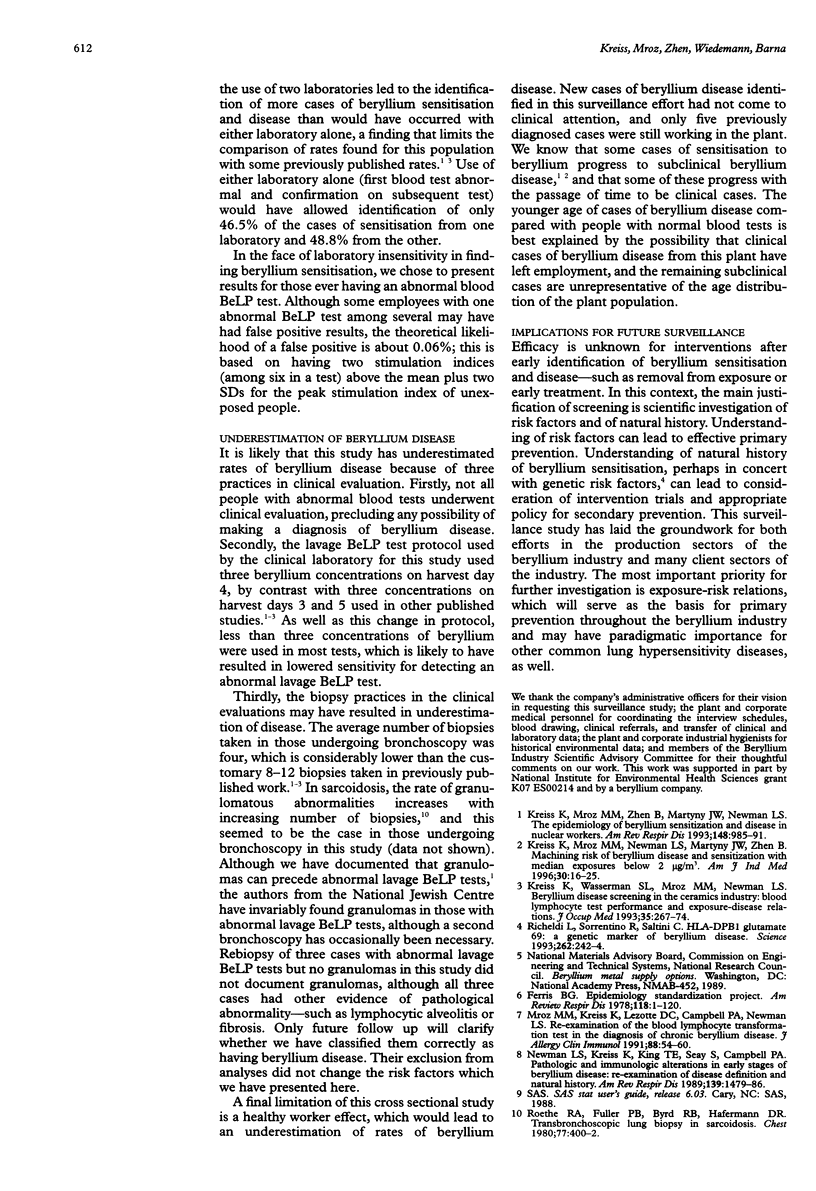
Selected References
These references are in PubMed. This may not be the complete list of references from this article.
- Ferris B. G. Epidemiology Standardization Project (American Thoracic Society). Am Rev Respir Dis. 1978 Dec;118(6 Pt 2):1–120. [PubMed] [Google Scholar]
- Kreiss K., Mroz M. M., Newman L. S., Martyny J., Zhen B. Machining risk of beryllium disease and sensitization with median exposures below 2 micrograms/m3. Am J Ind Med. 1996 Jul;30(1):16–25. doi: 10.1002/(SICI)1097-0274(199607)30:1<16::AID-AJIM3>3.0.CO;2-Q. [DOI] [PubMed] [Google Scholar]
- Kreiss K., Mroz M. M., Zhen B., Martyny J. W., Newman L. S. Epidemiology of beryllium sensitization and disease in nuclear workers. Am Rev Respir Dis. 1993 Oct;148(4 Pt 1):985–991. doi: 10.1164/ajrccm/148.4_Pt_1.985. [DOI] [PubMed] [Google Scholar]
- Kreiss K., Wasserman S., Mroz M. M., Newman L. S. Beryllium disease screening in the ceramics industry. Blood lymphocyte test performance and exposure-disease relations. J Occup Med. 1993 Mar;35(3):267–274. [PubMed] [Google Scholar]
- Mroz M. M., Kreiss K., Lezotte D. C., Campbell P. A., Newman L. S. Reexamination of the blood lymphocyte transformation test in the diagnosis of chronic beryllium disease. J Allergy Clin Immunol. 1991 Jul;88(1):54–60. doi: 10.1016/0091-6749(91)90300-d. [DOI] [PubMed] [Google Scholar]
- Newman L. S., Kreiss K., King T. E., Jr, Seay S., Campbell P. A. Pathologic and immunologic alterations in early stages of beryllium disease. Re-examination of disease definition and natural history. Am Rev Respir Dis. 1989 Jun;139(6):1479–1486. doi: 10.1164/ajrccm/139.6.1479. [DOI] [PubMed] [Google Scholar]
- Richeldi L., Sorrentino R., Saltini C. HLA-DPB1 glutamate 69: a genetic marker of beryllium disease. Science. 1993 Oct 8;262(5131):242–244. doi: 10.1126/science.8105536. [DOI] [PubMed] [Google Scholar]
- Roethe R. A., Fuller P. B., Byrd R. B., Hafermann D. R. Transbronchoscopic lung biopsy in sarcoidosis. Optimal number and sites for diagnosis. Chest. 1980 Mar;77(3):400–402. doi: 10.1378/chest.77.3.400. [DOI] [PubMed] [Google Scholar]


